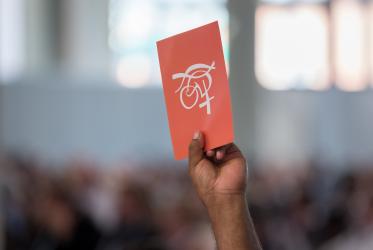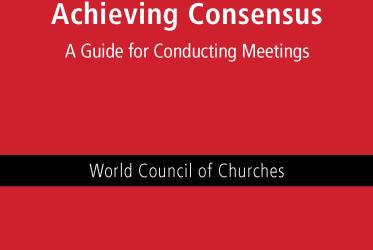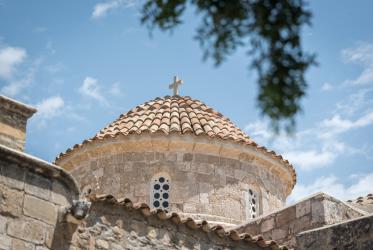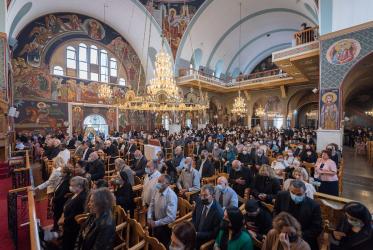by D'Arcy Wood
This paper is offered as an encouragement to the exploration of alternative methods of debate, voting and decision-making in the committees and other bodies within the WCC. In 1995, the Uniting Church in Australia adopted a new manual for meetings which replaced the former standing orders and rules for debate. This paper is a summary of the new manual.
The change in 1995 was a major one for the UCA. Years of work went into the new model, and the manual which resulted is 37 pages in length.
Reasons for change
The old rules were similar to the parliaments of western democracies. The style was adversarial with motions and amendments debated "for and against". Decisions were by formal vote, a majority of 50% plus one being sufficient.
There developed a desire for less formal procedures and a hope for a greater voice for minorities. New members of presbyteries and synods often found parliamentary methods difficult to handle. It was hoped (and the hope has been realised, at least in part) that a new model would encourage a greater participation in discussion and that the sense of community would be greater. Certainly there is a general view within the UCA in the past several years that the varied parts of the body of Christ are present and active in decision-making.
The consensus procedure
At the beginning of discussion, when an issue is raised, there is time for seeking clarification, asking questions and canvassing possible ways forward.
A proposal, not always in complete or final form, is suggested and open discussion instead of debate follows. Members of the committee/synod/other body may speak more than once. As discussion continues anyone may propose a change to the proposal without having to move an amendment. The committee may send the proposal to a drafting group or divide the whole committee into sub-groups. A consensus is reached when either a) all are in agreement, or b) most are in agreement, while those who disagree are content that the discussion has been fair and that the proposal expressed the mind of the majority.
If consensus cannot be reached, the chairperson or any member can propose that formal procedures be used, that is, the older parliamentary model. Since 1995, reports from presbyteries, synods and the national assembly indicate that the reversion to formal procedures is rarely necessary.
The chart (Figure 1) at the end of this paper may seem complicated, but the procedures do seem more relaxed as well as more effective than the old ones.
The chairperson
The success of consensus procedures depends to a great extent on the capacity, experience and fairness of the chairperson. He or she must see that all are given opportunity to speak and that no individual or small group dominates. He or she must also sense the trend of the discussion and summarise progress from time to time.
The chairperson may call for an "expression of opinion" at any stage of the discussion, for example, on a revised version of the original proposal. In giving that opinion, members often use coloured cards (orange for a positive opinion, blue for a negative) and the chairperson can thus gauge responses quickly. These cards are also useful in identifying those who are not persuaded by a consensus viewpoint that is developing. The chairperson then invites these "blue card" people to explain what it is that caused them to hold a negative opinion.
As indicated above, formal procedures are rarely necessary but unanimity is not very common either. A consensus decision-making may be reached without unanimity! How so? Those who disagree with the proposal indicate their willingness to allow the proposal to be adopted despite their personal opinion.
Subsidiary matters
The keeping of minutes which use consensus procedures requires considerable skill and practice.
Not all sessions in an extended meeting will necessarily use the consensus procedures. These may be "information sessions" or "general". The full manual sets out the detail. A few copies of the full text are available.
Conclusion
The use of the new procedures has been welcomed by most participants in the councils and committees of the UCA. Comments are often along the line that meetings are "less formal", "fairer", more "co-operative". Those who have reflected in theological terms detect a greater openness to the influence of the Holy Spirit and a greater expression of community and co-responsibility.




